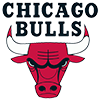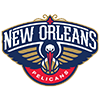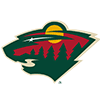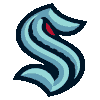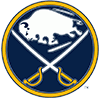And that's a wrap for this column for the 2019 fantasy baseball season. Thanks for reading, asking questions and providing feedback this year. For me, the best part about this column is seeing your questions and feedback in the comments section, whether positive or negative. Hopefully at least we've provided some value for your appreciated investment of money and time. As we wrap, I wanted to conclude with my 2019 All-Surprise Team. These are guys that I in no way expected would step up and provide the contributions that they have. Having one or more of these guys on your fantasy team means that you likely received tremendous value for where you drafted / purchased them (or picked them up off the waiver wire scrap heap). We'll also provide a 2020 outlook for each, so here we go:
Catcher
Mitch Garver (MIN)
We got a glimpse of Garver's potential last year when he hit .293/.349/.474 in the second half while splitting time with Jason Castro. This year, Garver has edged Castro in catcher starts (71 to 69), but he's seen time as a pinch-hitter and DH, though with his bat, you'd like to see more than 350 PA on the season, even considering the nearly three weeks missed earlier in the year due to an ankle injury. Garver for the year has hit .274/.366/.634 with a surprising 31 home runs and solid ratios – 11.4 BB percentage, 23.4 K percentage. For a guy to hit 24 more home runs
And that's a wrap for this column for the 2019 fantasy baseball season. Thanks for reading, asking questions and providing feedback this year. For me, the best part about this column is seeing your questions and feedback in the comments section, whether positive or negative. Hopefully at least we've provided some value for your appreciated investment of money and time. As we wrap, I wanted to conclude with my 2019 All-Surprise Team. These are guys that I in no way expected would step up and provide the contributions that they have. Having one or more of these guys on your fantasy team means that you likely received tremendous value for where you drafted / purchased them (or picked them up off the waiver wire scrap heap). We'll also provide a 2020 outlook for each, so here we go:
Catcher
Mitch Garver (MIN)
We got a glimpse of Garver's potential last year when he hit .293/.349/.474 in the second half while splitting time with Jason Castro. This year, Garver has edged Castro in catcher starts (71 to 69), but he's seen time as a pinch-hitter and DH, though with his bat, you'd like to see more than 350 PA on the season, even considering the nearly three weeks missed earlier in the year due to an ankle injury. Garver for the year has hit .274/.366/.634 with a surprising 31 home runs and solid ratios – 11.4 BB percentage, 23.4 K percentage. For a guy to hit 24 more home runs in 15 more PA compared to the previous year, it's safe to say that this sort of came out of nowhere a bit. Garver probably comes up a bit short to J.T. Realmuto as fantasy's top catcher due to Realmuto having close to 250 more PA, but no one comes close in exceeding their draft positions.
2020 Outlook: Eighteen of his homers have come since the break, so it's not like he started hot and was figured out. I understand the Twins don't want to burn him out by making him start 80 percent of days behind the plate, but hopefully they can get creative and get his bat in the lineup a bit more frequently in 2020. He'll come off the board next year as the No. 2 or No. 3 catcher.
Honorable mentions: Christian Vazquez, James McCann
First Base
Matt Olson (OAK)
Lots of candidates here. Who were your successes? We certainly didn't expect Pete Alonso to hit 50 home runs or Carlos Santana to hit 34 while playing in more than 150 games. Trey Mancini is at .286-34-93, one of the few bright spots on a bad Orioles team while even Daniel Vogelbach came up big (.344 OBP, 30 HR, but unusable in BA roto leagues). We're going with Olson though. He's hit .267/.351/.547 with 35 homers and 89 driven in. The power isn't too shocking, as he hit 29 last year, though in 135 more PA and 24 in 2017 in just 216 PA. Olson, though, has improved his BA 21 points and OPS by 115 points. He's sixth in hard hit rate per Baseball Savant at 51.1 percent, 18th in average exit velocity and 20th in barrels per PA. FanGraphs has 16 first base qualifiers with 25 or more home runs, but Olson still manages to stand out.
2020 Outlook: One thing to watch will be a potential platoon. Olson has hit just .222/.285/.479 against LHP, though that's still up from last year's .701 OPS I suppose. The strong hard hit rate and reasonable .299 BABIP gives us some hope that he could hit .270, but unless Olson can get his 25 percent K percentage down to around 20 percent, anything more than that seems unlikely.
Honorable mentions: Trey Mancini, Pete Alonso, Carlos Santana and others
Second Base
Ketel Marte (ARI)
Marte has single-handedly saved the Diamondbacks from a trade that last year was looking like a disaster for the Diamondbacks. To get Marte and Taijuan Walker, Arizona gave up a pair of players who made the All-Star team last year in Jean Segura and Mitch Haniger. Marte, though, has gone from a solid regular who hit .260/.332/.437 with 14 homers last year to basically a juggernaut hitting .329/.389/.592 with 32 homers and 10 stolen bases. That will be his final line, as he's done for the year with a back injury having played in 144 games. The power spike looks to be legitimate, as he's nearly doubled his barrel percentage to 9.3 and his launch angle to 11.5 degrees from 2018's 5.7. He's hitting the ball harder, and his K percentage is just 13.7, which these days is borderline elite. The switch-hitter has most notably improved as a LH hitter, improving his year-over-year OPS from .651 to .998 in 2019.
2020 Outlook: It may be tough to sustain a 19 percent HR/FB rate, but Marte should be good for 25 to 30 home runs again in 2020. As far as his batting average, Marte makes good contact and he's hitting the ball harder, so .300-plus in 2020 should be a lock. He did hit .358 in the second half this year, so it's not as if he's been "figured" out.
Honorable mentions: DJ LeMahieu, Jonathan Villar
Shortstop
Marcus Semien (OAK)
A .249/.310/.403 career hitter coming into the season, Semien is looking at a top-10 AL MVP finish, as he's hit a strong .287/.369/.525 with 32 homers, 14 steals, 120 runs (!) and 91 RBI. He's been a counting stats machine and he's played in all 156 of the team's games. Semien has shown this sort of power before, knocking 27 homers in 2016, but he had just 25 in 244 games from 2017 to 2018, so it was fair to think he's already possibly peaked with the 27. This year however, he's also driven his BA forward to new heights, due in large part to a far better approach at the plate. Prior to this year, Semien had a mediocre .37 career BB/K. This year, that number sits at .81 (11.3 BB percentage, 14 percent K percentage), and his .238 ISO is up 41 points over his career high (2016).
2020 Outlook: More of the same. Semien is still just 28 and he's hitting .278/.457/.756 in September. A few more steals would be nice, but he's still looking like a fifth-round pick in 12-team mixed league drafts.
Honorable mentions: Jorge Polanco, Tim Anderson
Third Base
Rafael Devers (BOS)
Just 21 last year when Devers struggled to a .240/.298/.433 slash line, most rightly expected positive regression in his second full season, but most probably didn't expect MVP-level production. Through 151 games, Devers was hitting .308/.359/.550 with 31 homers, 113 RBI, and a whopping 123 runs. He even chipped in eight steals despite being listed at 240 pounds. He's still not great against southpaws, batting .271/.305/.447 against them, but that's still an improvement of 133 points of OPS over last year. Our projection that he's hit .264/.322/.455 was a bit off.
2020 Outlook: First-round pick material, though will need to show improvement versus LHP to maintain his current level of production.
Honorable mentions: Eduardo Escobar, Yuli Gurriel
Outfielders
Max Kepler (MIN), Bryan Reynolds (PIT), Mark Canha (OAK)
Kepler: I was pretty surprised to see Kepler get $35 million coming off a .224/.319/.408 season, but with some power and excellent defense, I can see it now. Of course, the Twins look like geniuses now considering Kepler is hitting .252/.336/.519 with 36 home runs. The BA is of course improved, but we still want to see it take a big step forward, and maybe it will. Kepler has drawn a fair number of walks (10.1 percent) while striking out a reasonable 16.6 percent of the time. His .244 BABIP seems to indicate some poor luck, but then again, it's just .253 overall in 553 career games, so there's more at play here. If you really want to dive into the metrics, Kepler's sweet spot percentage sits at just 31 percent for 337th place in the league, so the contact he does make that stays in the yard isn't always squared up. That doesn't seem too concerning going forward, but either way, it doesn't appear .300 is in his future.
2020 Outlook: Another step forward to .260 with 30 to 35 homers seems likely.
Reynolds: Reynolds probably isn't going to win the NL batting title, but the fact it was even possible in mid-September is surprising. Reynolds had the look of a guy with "an average regular" ceiling coming into this season, but that's changed after he's hit .318/.381/.509 this year with 16 home runs. He's probably never going to be a big power hitter, but considering he's 6'3" in a juiced ball era, perhaps he makes a move to 25 homers in the next few years. As for his batting average, Reynolds never failed to hit .300 at any of his minor league stops, so that should continue.
2020 Outlook: Very good No. 2 hitter. 300 BA, 20 HR upside, hopefully more runners on base when he's hitting.
Canha: Canha figured to continue his role as a lefty masher, playing everyday against southpaws and occasionally versus RHP, but now he's a righty masher as well, batting .277/.399/.529 overall, but an even-better .298/.418/.553 against RHP. He's put up a .970 OPS since the All-Star break, and his ratios are excellent (13.5 BB percentage, 21.4 K percentage), leading to the year-over-year 28-point improvement in his BA. Canha's meager RBI total reflects that 18 of his 26 homers have been solo shots and that he's hit just .224 with men on base (.301 with the bases empty). That can vary year-to-year though, so seeing him drive in 80 to 100 next year wouldn't be too shocking.
2020 Outlook: One third of a very underrated A's outfield (Ramon Laureano, Stephen Piscotty).
Honorable mentions: Austin Meadows, Michael Brantley, Jorge Soler
Starting Pitching
Lucas Giolito (CHW), Lance Lynn (TEX), Domingo German (NYY)
Giolito: If you got tired of waiting on his upside and ended up with zero Giolito shares in 2019, you're not alone. After all, the former top prospect entered the year with a 5.47 career ERA in 240 innings with an ugly 170:114 K:BB. Sometimes though the talent wins out, and that's sure happened here. Giolito is 41-9 with a 3.41 ERA and 1.06 WHIP with an excellent 228:57 K:BB in 176.2 innings. He does have a 5.21 ERA in his last three starts, but that's come with a 25:3 K:BB in 16 innings, so while there may be some fatigue, it's not like he's collapsed. Giolito has added nearly two full mph to his fastball while dropping his BB/9 from 4.7 to 2.9 compared to last year. What really stands out, though, is one of my favorite metrics: swinging strike percentage. After a below-average 8.3 percent a year ago, Giolito sits at 15 percent this year, behind only Justin Verlander and Gerrit Cole for the AL lead. He's legit.
2020 Outlook: Giolito has a 2.0 BB/9 in his last seven starts. If he can get into that range over the course of a full season, a Cy Young trophy could be in his near future.
Lynn: A three-year deal for a 32-year-old starter coming off a 4.77 ERA didn't seem like a great idea, but Lynn has proven to be one of the better offseason signings in the game. He's made at least 29 starts now in each of his last seven seasons, peaking this year with 15 wins, a 3.76 ERA, and a stunning 236 strikeouts. Lynn's 10.6 K/9 and 2.6 BB/9 are easily career-highs, and he's avoided being plagued by the HR ball like a lot of starters, posting a very reasonable 0.90 HR/9, considering his home park. He's been a bit up and down recently, going 1-3 with a 4.50 ERA in his last six starts, but that has come with a very nice 49:12 K:BB in 36 innings. The Rangers have major flaws on the offensive side and in the bullpen, and won't be competing with the Astros and A's anytime soon, so they could look to move guys like Lynn and Mike Minor this winter.
2020 Outlook: The Rangers will trade one or both of Lynn and Minor this winter, but should Lynn stay, his 3.14 FIP indicated he can sustain another sub-4.00 ERA season with a fair number of strikeouts.
German: It seems likely that German will miss 2020 games due to his domestic violence issues, but putting that dark side of the equation aside, German has contributed 18 wins, a 4.03 ERA, and 153 strikeouts in 143 surprising innings. German pitched to just a 5.57 ERA last year in 85.2 innings, but that came with a better 4.33 FIP, 10.7 K/9, and 3.5 BB/9. Now exclusively a starter (for the most part) this year, he's lost about a mph on the fastball, and his K/9 has degraded to 9.6, but his control is much-improved (2.5 BB/9). Like many hurlers, German has major issues with the long ball (1.9 HR/9), and his 4.72 FIP this year clouds things a bit going forward, but kudos if you benefitted from most of his 18 wins.
2020 Outlook: Murky. The potential for a significant suspension looms, and the 4.72 FIP is indicative of some luck. As for the wins, the likelihood that German gets 6.33 runs per game next year (eighth in the AL among starters with 100-plus innings) seems remote. He looks to be primed for regression.
Honorable mentions: Eduardo Rodriguez, Marco Gonzales, Hyun-Jin Ryu
Relief Pitching
Liam Hendriks (OAK), Taylor Rogers (MIN)
Hendriks: Reliever volatility reared its ugly head in Oakland this year, as 2018 stud reliever Blake Treinen went from one of the better reliever seasons ever in 2018 (0.78 ERA, 38 saves, 100 strikeouts) to posting a 4.91 ERA this year and losing the closer job to Hendriks. After putting up a 5.59 ERA in 16 starts as a starter with the Twins in 2012, Hendriks has remade himself as a reliever, culminating in his year's 23 saves, 1.64 ERA and 119:21 K:BB in 82.1 innings. The gains in velocity have been unbelievable:
Average fastball velocity:
2012: 90 mph
2018: 94.3 mph
2019: 96.4 mph
It's a massive step forward, and Hendriks' 17.9 percent swinging strike rate ranks seventh among all relievers, with Josh Hader's 22.9 percent mark setting the gold standard. The A's have just one more year of team control over Hendriks, and as he's looking at a significant increase over this year's $2.15 million salary, one has to wonder whether the club will look to move him this winter.
2020 Outlook: TBD. As mentioned above, Hendriks could be an offseason trade candidate, or the A's could bring him back and go all in on 2020. I think the latter is more likely.
Rogers: In our preseason Twins outlooks, we had Addison Reed and Trevor May ahead of Rogers on the saves hierarchy. Blake Parker also factored in early with 10 saves before being DFAd in July with a 7.11 ERA. Meanwhile, Reed is currently a free agent after allowing eight runs on 13 hits over five innings in a Triple-A rehab assignment. It's a bit odd that he hasn't resurfaced elsewhere, but sometimes players just drop off that quickly. Meanwhile Rogers has quietly turned into an elite reliever, for the past two seasons. After posting a 2.63 ERA and 75:15 K:BB in 68.1 innings last year in a setup role, Rogers has moved into the closer role this year and taken another step forward, saving 28 games with a 2.69 ERA and 88:10 K:BB in 67 innings. A rough outing last time out added 39 points to his ERA, but in his previous 13 innings, Rogers was 10-for-10 in save chances with one run allowed and a 20:0 K:BB, so he should be fine.
2020 Outlook: Rogers is controllable through 2022, so with the Twins pushing 100 wins, having just $20 million in guaranteed salaries on the 2020 books and soon set to graduate some elite prospects such as Royce Lewis and Alex Kirilloff, they should have a very competitive window for the next few years. Rogers looks to be a lock to open 2020 as their closer.
Honorable mentions: Ian Kennedy (KC), Hansel Robles (LAA), Brandon Workman (BOS), Emilio Pagan (TB)


















